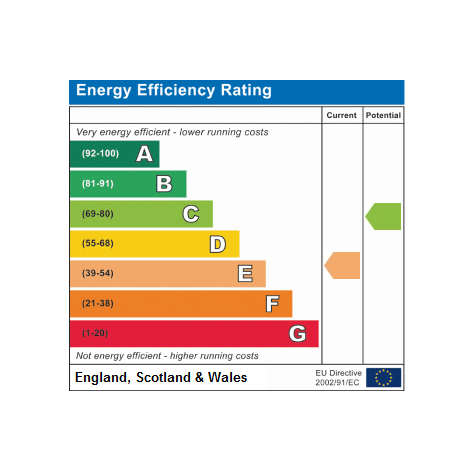While the changes to the minimum energy efficiency standards (MEES) requirements may seem daunting, these changes are part of a long-term strategy and you therefore still have time to achieve them.
A consultation held back in June 2021 builds on the existing changes to requirements on non-domestic tenanted properties. As Jamie Chamberlain discussed in a previous blog, the first stage of these changes came into effect back in April 2018. Since this date private rented commercial properties are required to have an Energy Performance Certificate (EPC) rating of at least E.
The consultation was held to support the government’s roadmap for the UK to bring all carbon emissions to net zero by 2050. Landlords, tenants and local authorities in England and Wales were among those invited to take part in the consultation, in order to provide their feedback and comments on the proposed targets.
If nothing changes, MEES compliance will require all non-domestic private rented properties to have an EPC level C by 1st April 2027 and a Level B by 1st April 2030. Using these staggered milestones allows landlords and tenants to work together to achieve these targets, where it is cost effective to do so. Exemptions can be applied for in certain circumstances, but failure to meet these EPC levels without an exemption would lead to fines being levied.
The government is expected to publish a response to the consultation towards the end of this year, so it will be interesting to see what is changed. While there does seem to be support of these proposed regulatory changes from many in the Private Rented Sector, there are some key areas of concern that have been raised.
Regulations on Older Buildings
There is an element of uncertainty around how the updated EPC regulations will affect Listed Buildings. The reason is that “Listed buildings…are withing the scope of the PRS Regulations if they are legally required to have an EPC.” (1)
Contrary to this, the government’s current guidance states that an EPC is not currently required for “Buildings protected as part of a designated environment or because of their special architectural or historical merit”. These buildings “are exempt from the requirements to have an energy performance certificate insofar as compliance with minimum energy performance requirements would unacceptably alter their character or appearance.” (2)
As it currently stands, a landlord would have to obtain an EPC simply to determine whether the building meets the minimum energy efficiency requirements. If it were deemed to meet the MEES requirements and the EPC is below the required level, the landlord would then need to spend time and money to seek advice whether the work “would unacceptably alter their character or appearance”. Understandably, this has led to some confusion, as an EPC would be needed to find out whether an EPC is needed.
To make things clearer for everyone, the consultation proposes to make it a requirement for all tenanted listed buildings, and those in conservation areas, to require an EPC, with the ability to apply for relevant exemptions.
Shell and Core units
Another item being addressed was the area of buildings or units which are commonly rented in a shell and core state. Retail, office and certain industrial sectors often rent buildings in this way, where a tenant will want to furnish the building to suit their needs, rather than renting a previously furnished property.
The challenge presented is that often, as the tenant begins occupancy, they will install or make changes to things such as lighting, ventilation and air conditioning, and possibly even heating. All of these aspects can have an effect on the EPC rating.
As landlords are required to ensure that the EPC is a given level before they are legally allowed to rent it, the concern is that the landlord may need to have work carried out to meet the required EPC level, only to have the tenant remove them again immediately as part of their fitout.
Alternatively, pre-tenancy agreements that stipulate that the tenant pays for the fitout before legally becoming a tenant are not always popular. The level of risk that these kinds of agreements carry for the prospective tenant is one that not everyone is comfortable with.
How AWH can help
In addition to the above there are other areas that the consultation discusses. One of the main things to take away from it though is that landlords and tenants will need to work together towards a common goal. Otherwise it may be difficult to achieve the required EPC levels. Naturally, each party will bear certain responsibilities. Without mutual cooperation, particularly for buildings where tenants make significant changes during their fitout, achieving the net zero carbon emissions target will become impossible.
AWH are experts in Landlord and Tenant negotiations and commercial property consultation. We would be delighted to work with you, whether you are a landlord or a tenant, to help ensure a mutually agreeable outcome that meets the MEES requirements.
If you have any questions about how to achieve the required Energy Performance Certificate levels, or wish to discuss any other aspect of how this might affect you, our expert team of RICS registered Chartered Surveyors are ready to help. Call us on 0800 071 5517 or email admin@awh.co.uk.
References:
(1) The Non-Domestic Private Rented Sector Minimum Energy Efficiency Standards, Page 17, paragraph 5.
(2) A guide to energy performance certificates for the construction, sale and let of non dwellings, page 9, paragraph 4

